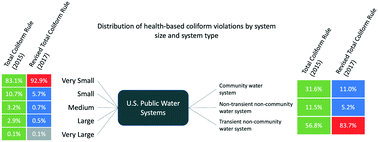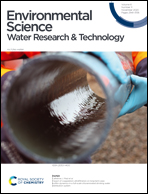Trends in microbiological drinking water quality violations across the United States
Abstract
This study analyzed temporal trends in health-based drinking water quality violations, and both temporal and geographic trends in microbiological drinking water quality violations for U.S. public water systems. We especially focused on microbiological regulations that apply to all public water systems, i.e., the total coliform rule (TCR), which became effective in 1990, and its successor, the revised total coliform rule (RTCR), which was implemented in 2016. By using the U.S. Environmental Protection Agency (EPA)'s Safe Drinking Water Information System, we determined that changes in regulations greatly impacted temporal trends in health-based violations. TCR health-based violations were the most common type of health-based violation, partly because the TCR required more monitoring than any other regulation and was one of the few rules that applied to transient non-community water systems, which make up a large fraction of all public water systems and often have limited resources. As expected by the U.S. EPA, the implementation of the RTCR caused an immediate decrease in the number of health-based violations due to specific changes in what constitutes a health-based violation under the RTCR versus the TCR. The number and severity of health-based coliform violations varied with system size and type, and this imbalance was exacerbated under the RTCR. Notably, while very small public water systems and transient non-community water systems already had more violations per system than their counterparts, this disparity was amplified upon adoption of the RTCR. Geographic analyses showed that the Great Lakes region had high numbers of total health-based coliform violations. While fewer data exist to analyze violations normalized by the number of systems, an initial exploration of health-based coliform violations per system resulted in different geographic patterns. We conclude with a discussion of the potential benefits of future predictive modeling to identify public water systems that would benefit from technical and financial assistance to improve their water quality.



 Please wait while we load your content...
Please wait while we load your content...